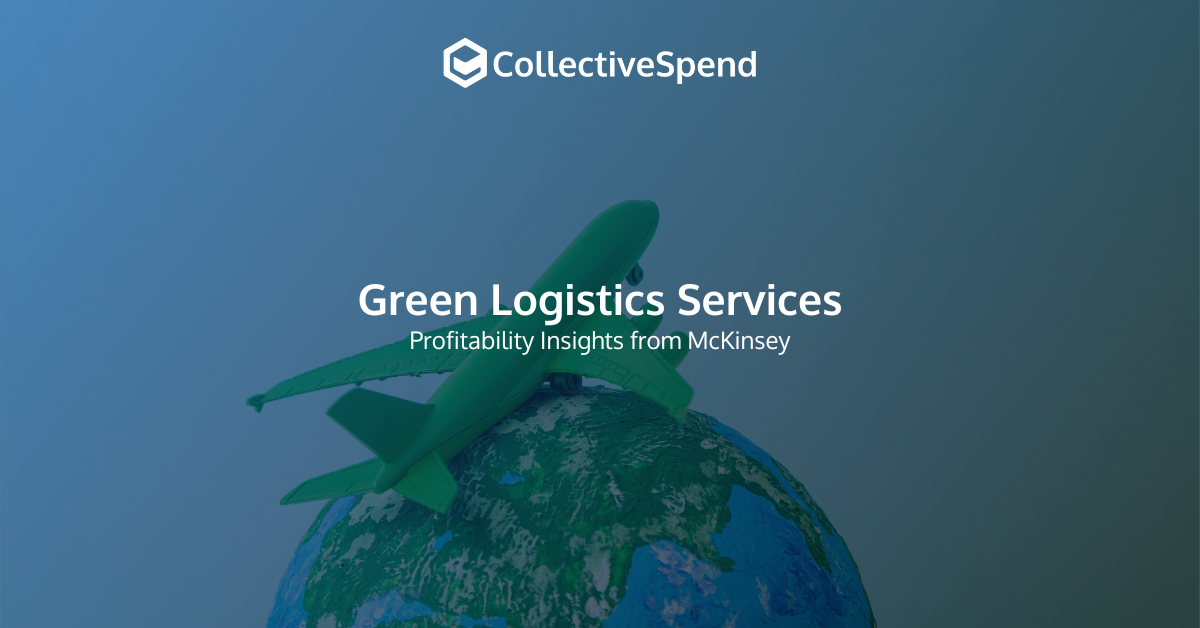The logistics industry is rapidly evolving, and the push for sustainable, environmentally friendly practices has never been more significant. Green logistics services are emerging as a key component in supply chain management, as they focus on reducing environmental impacts while maintaining efficiency and value. However, with the rising need for sustainable solutions comes the challenge of ensuring profitability for these greener alternatives.
McKinsey, a renowned global consultancy firm, recently conducted an in-depth study on making green logistics services profitable. Their insights reveal the potential for driving profitability through eco-friendly logistics initiatives, offering valuable guidance for supply chain professionals and organizations committed to reducing their environmental footprint.
In this article, we delve into McKinsey’s insights and explore how your organization can implement profitable green logistics services. From strategically selecting the right initiatives to leveraging Procurement Consultancy and Tail Spend Marketplace Provider, CollectiveSpend to achieve your sustainability goals, our discussion aims to equip you with the necessary tools and knowledge to succeed in the green logistics landscape.
1. Embracing the Circular Economy Model
One key strategy highlighted by McKinsey to drive profitability while pursuing green logistics initiatives is embracing the circular economy model. Unlike the traditional linear system of “take-make-dispose,” the circular economy focuses on minimizing waste and prolonging the value of resources by designing for reuse, recycling, and regeneration.
To implement the circular economy model within your supply chain, consider the following steps:
- Evaluating the environmental impact of your materials, products, and packaging and seeking sustainable alternatives where possible
- Collaborating with suppliers to implement return and recycling programs for products reaching their end-of-life or unused materials
- Develop strategies to extend the life cycle of products, minimize waste, and maximize value extraction from resources
2. Optimize Transportation and Distribution Networks
Improving the efficiency of transportation and distribution networks is another crucial aspect of achieving profitability in green logistics services. This can be achieved by exploring route optimization, energy efficiency, and load consolidation. Key considerations include:
- Route planning: Analyzing distribution routes to minimize distance and energy consumption, reducing CO2 emissions and transportation costs
- Fleet management: Upgrading to more fuel-efficient or electric vehicles, adopting driver training programs for greener driving practices, and employing predictive maintenance strategies for optimal fleet performance
- Load consolidation: Streamlining and consolidating shipments to reduce the frequency of less-than-truckload (LTL) shipments, minimizing fuel consumption and costs
3. Investing in Green Warehousing and Technologies
Green warehousing initiatives have significant potential for driving sustainability and profitability in green logistics services. Warehousing advancements and technologies that incorporate eco-friendly practices can contribute to energy savings and carbon emissions reduction. Key areas to consider include:
- Energy efficiency: Installing energy-efficient lighting, heating, and cooling systems to reduce energy consumption costs
- Renewable energy sources: Incorporating solar panels, wind turbines, or other renewable energy sources to power warehouse facilities and reduce dependence on fossil fuels
- Green building materials: Utilizing eco-friendly building materials for new constructions or retrofits can improve insulation and overall energy efficiency
- Real-time tracking and analytics: Employing smart sensors and IoT technologies in warehouses can provide valuable data, enabling more informed decisions regarding energy usage and inventory management
4. Collaboration and Partnership for a Greener Supply Chain
Building a sustainable and profitable green logistics service requires collaboration with suppliers, service providers, and stakeholders who share your organization’s commitment to sustainability. Establishing partnerships and fostering a culture of continuous improvement is essential for achieving these goals:
- Supplier selection: Prioritize partnering with suppliers who demonstrate a commitment to sustainability and eco-friendly practices, ensuring alignment with your organization’s green objectives
- Knowledge sharing: Encourage cross-company learning and collaboration by sharing best practices, innovations, and successes in the pursuit of green logistics initiatives
- Industry collaboration: Engage with industry associations, forums, and regulatory bodies to stay informed on evolving environmental standards and contribute to shaping regulations in line with industry needs
5. Integrating Sustainability Metrics and Performance Indicators
Measuring and monitoring the success of your green logistics services is essential for driving profitability and sustainability. Incorporating operational and environmental performance indicators into your strategic decision-making process can help you stay on track. Consider the following metrics:
- Carbon emissions tracking and reduction targets
- Energy consumption and waste reduction data
- Percentage of recycled or reused materials in procurement
- Percentage of eco-friendly vehicles in your fleet
Achieving Profitable Green Logistics with CollectiveSpend
Profitable green logistics services are within reach when organizations strategically prioritize sustainability, invest in eco-friendly infrastructure, and leverage best practices drawn from industry insights such as McKinsey’s research. By embracing the circular economy, optimizing transportation networks, investing in green warehousing, fostering collaboration, and tracking sustainability metrics, organizations can drive both profitability and positive environmental impact within their supply chains.
CollectiveSpend, a procurement consultancy and tail spend marketplace provider, is the perfect partner to help you achieve these green logistics objectives. With expert advice, industry experience, and support, CollectiveSpend will empower your organization to develop and implement sustainability-focused procurement strategies that drive profitability in green logistics services.
Harness the power of profitable, sustainable operations by partnering with CollectiveSpend. Discover how our team can enable your organization to develop and refine green logistics strategies that create value, foster long-term growth, and contribute to a cleaner environment for all.




